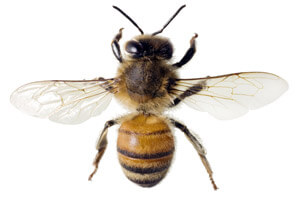
A few years ago, I had the distinct pleasure of meeting Drs. Niko and Gudrun Koeniger. Dr. Niko Koeniger is the former head of the German bee research institute in Oberursel, Germany and professor of biology at the Goethe University in Frankfurt. Dr. Gudrun Koeniger worked as a research scientist and editor of the international bee journal Apidologie. Both have devoted a lifetime to the study of honey bee diversity and biology. Among other things, they worked tirelessly to decipher the intricacies of honey bee mating biology. Their work culminated in a book on the topic written for German beekeepers. The book is entitled (English translation) Mating Biology and Mating Control.
In 2014, Niko and Gudrun approached me about producing a revised English version of their German book. Thus, work commenced on Mating Biology of Honey Bees (Apis mellifera), a book we coauthored with Dr. Larry Connor of Wicwas Press. Much of what I share in this article is taken from our joint book. (Caution: shameless self-promotion follows.) Feel free to read the book to discover more information on the mating biology of honey bees if this topic is of interest to you. The full citation for the book can be found in the reference section at the end of the article.
Rearing and sexual maturation of queen honey bees
Typically, honey bee colonies are headed by a single queen whose primary responsibility is to produce offspring (Ellis, 2015c). There are times in the normal lifecycle of a colony when a new queen must be produced. This occurs when a colony swarms (Ellis, 2015a) or when a queen is lost for whatever reason (death, maimed, etc.). I will not spend any time in this section discussing what leads to a colony’s decision to make a new queen, but rather I will discuss queen development from egg to sexual maturity.
Queen honey bees result from fertilized eggs that are destined to become female, but not otherwise predetermined to be either a queen or a worker. The decision to make a female larvae a queen or worker lies with a colony’s worker bees. Worker honey bees in the nest take a female larva that emerges from a fertilized egg and direct her to royalty by feeding her more and better quality food (royal jelly – Figure 1) than that fed to her sisters who are to become workers. This they can do because the female larvae remain bipotent (can become either queens or workers) up to 48 hours after emerging from their eggs. Caste determination of the female larvae becomes final on the larvae’s third day after emergence, at which time the workers begin to offer the developing monarchs copious amounts of royal jelly. This rich food ensures rapid growth of the developing larvae, whose weights increase 600-fold during their first six days of life.
Queen honey bees develop in peanut hull-shaped cells that hang vertically from the face or periphery of the brood comb. This means that the developing queens hang upside down while maturing. It takes a queen about 16 days to develop from egg to adulthood, this likely because of the large volume of good food she receives while young. When she is ready to emerge, the queen will use her powerful mandibles to cut through the cell capping, and emerge upside down into the colony (Figure 2).
The first emerging queen has hit the jackpot, of sorts. She is first in line to inherit the nest and the colony of bees it contains. If she is successful, she will be fed, groomed, and otherwise pampered daily as she progresses through a life that is many times longer than those of her sister workers and eventual offspring. However, she has some work to do before she can receive her inheritance.
Newly emerged queens seek out and eat the food necessary to power their upcoming activities, the first of which involves getting rid of the competition. As you might imagine, a colony does not usually attempt to rear only one queen when they intend to swarm or otherwise need a queen. Instead, they invest in the production of dozens of queens, all of which are developing alongside the first queen to emerge. The first queen to emerge, consequently, becomes a stealthy assassin who searches for her developing sister queens so that she can eliminate the threat they pose to her impending assentation to the throne.
A newly emerged queen will begin checking all of the brood combs in the nest, doing this …


